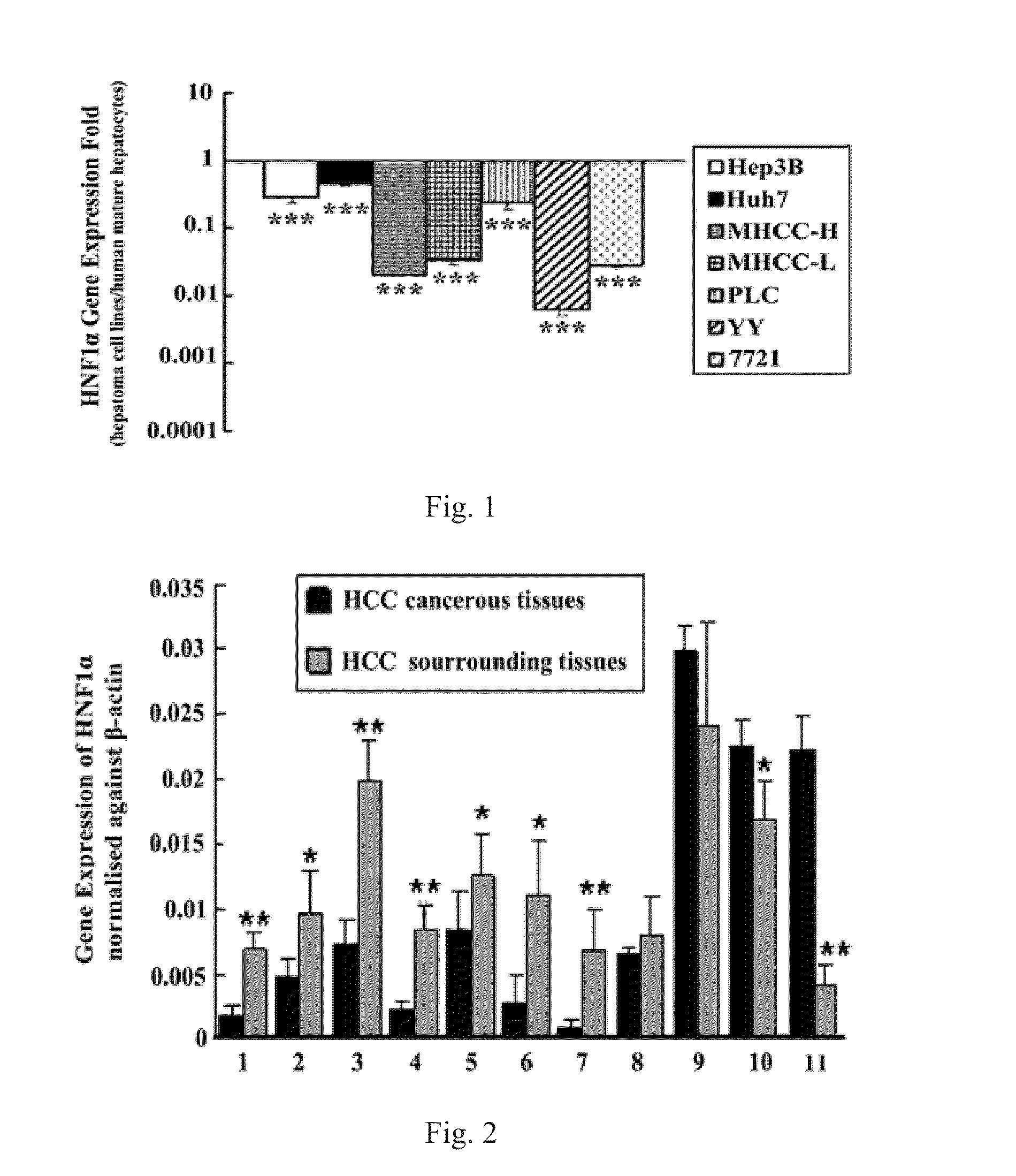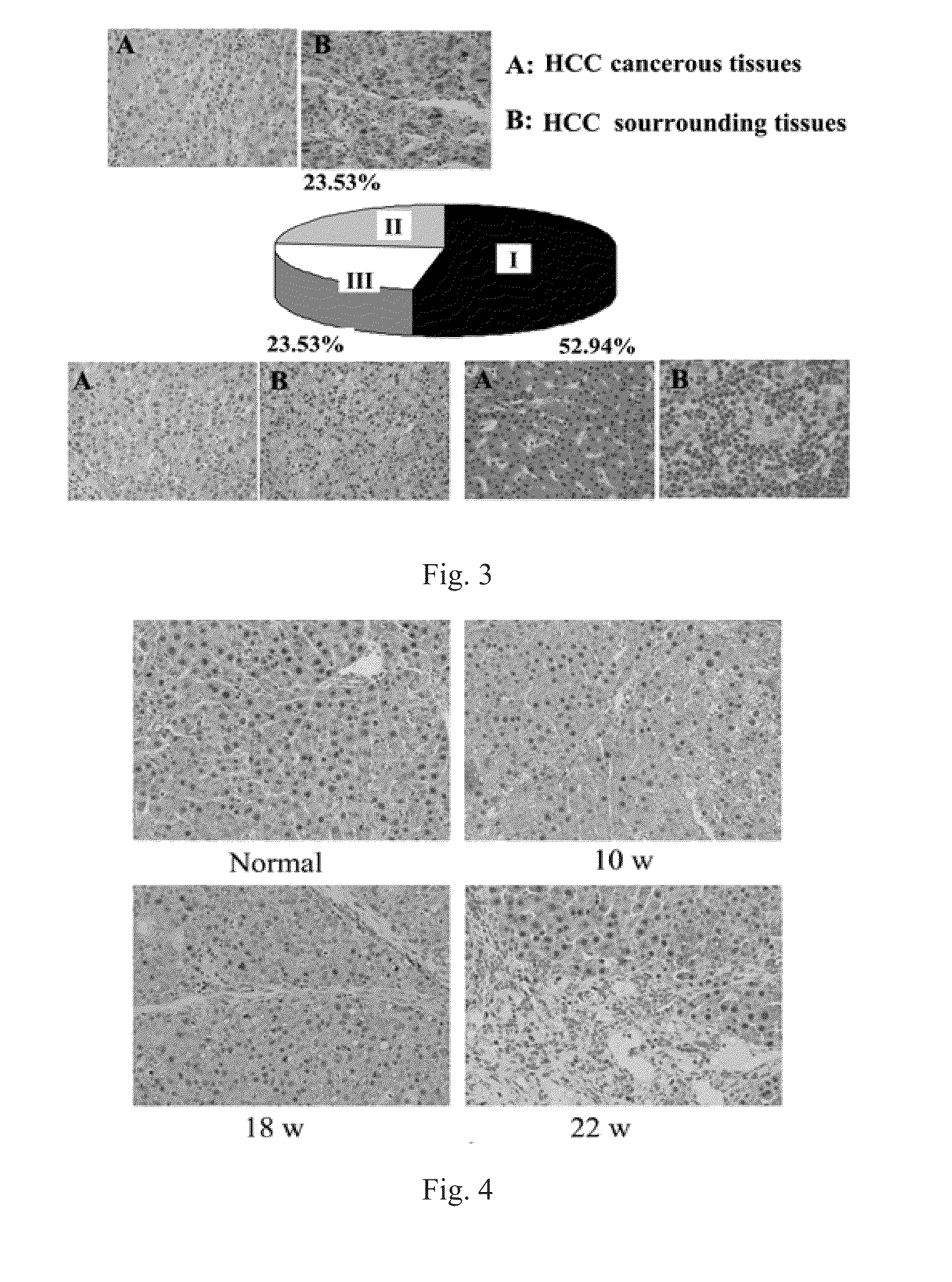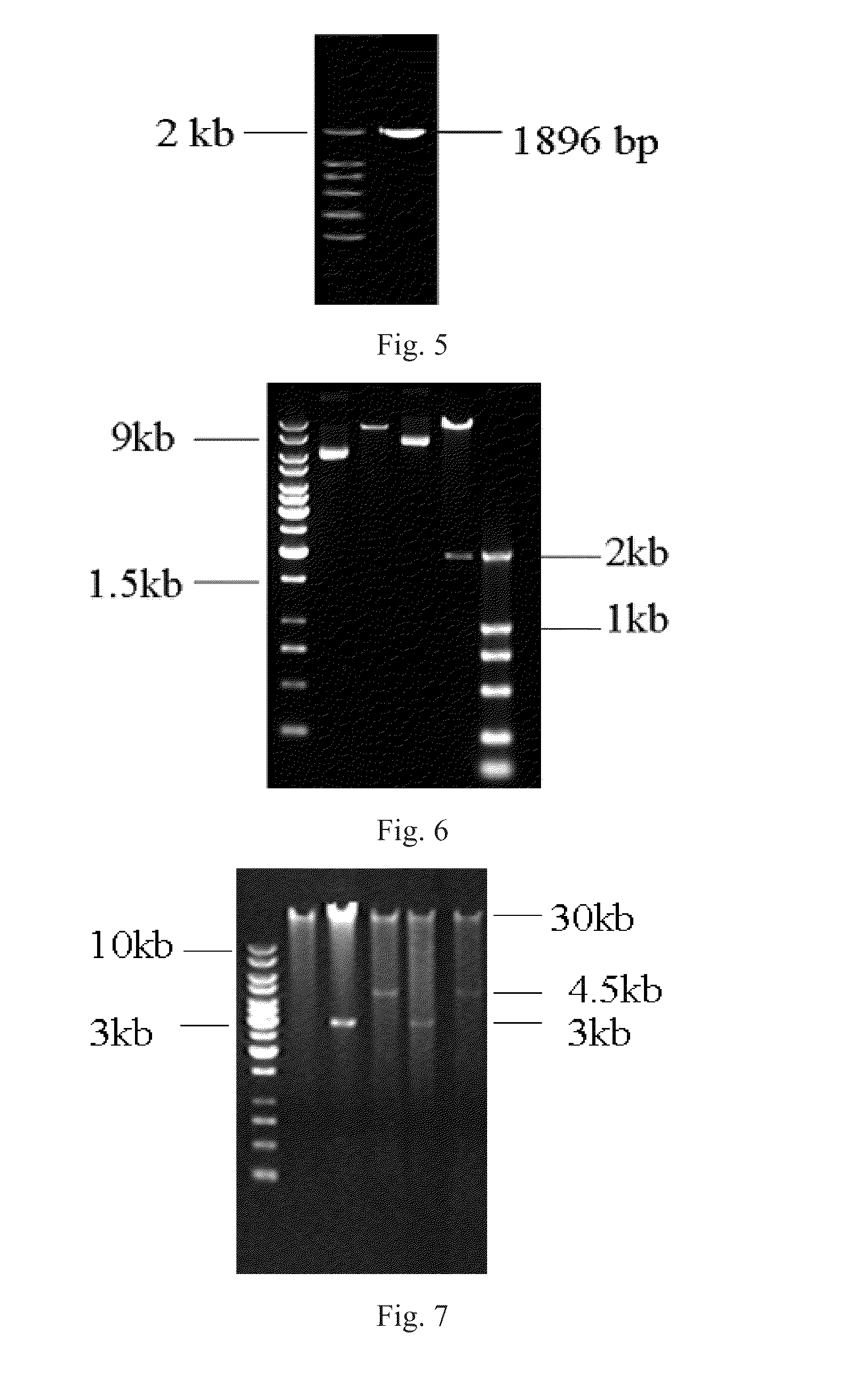Use of hepatocyte nuclear factor 1a in preparation of drug for treating malignant solid tumor disease
a technology of hepatocyte nuclear factor and preparation of drugs, which is applied in the field of use, can solve the problems of short-term efficiency of treatment methods, unreported hepatocyte nuclear factor 1 gene and/or protein in preparation of drugs for treating malignant solid tumor diseases, etc., and achieve the effect of reducing the number of tumor cells and improving the biological properties of tumor cells
- Summary
- Abstract
- Description
- Claims
- Application Information
AI Technical Summary
Benefits of technology
Problems solved by technology
Method used
Image
Examples
example 1
The Expression of HNF1α Gene in Human Hepatoma Cell Lines was Detected by Real-Time RT-PCR
[0046]1. The hepatoma cell lines Huh-7, Hep3B, MHCC-H, MHCC-L, PLC, YY and 7721 were inoculated in 6-well plates with 5×105 / well, then cultivated in fresh culture solution containing 10% fetal calf serum. The next day, the RNA was extracted from cells and then determined by spectrophotometer at OD260. The RNA concentration was made into working concentration (1 μg / μl and 0.1 μg / μl), and the integrity of RNA was detected by 1% agarose gel electrophoresis.
[0047]2. Real-time RT-PCR: 4 μg RNA, 2 μl Random primer and DEPC treated water were mixed to 33 μl, after placed at 70° C. for 5 min and 0° C. for 5 min, 10 μl 5× Buffer, 3 μl dNTP, 2 μl RNA reverse transcriptase and 2 μl RNAase inhibitor were added into the mixture. After the aforesaid mixture was mixed and placed at 37° C. for 1.5 h, the reverse transcription product was obtained (see Table 1). The diluted reverse transcription product of 1 μl...
example 2
The Expressions of HNF1α Gene and Protein in Human Hepatocellular Carcinoma Cancerous Tissues and Surrounding Tissues were Detected by Real-Time RT-PCR and Immunohistochemistry
[0048]1. Real-time RT-PCR: the RNA of human hepatocellular carcinoma cancerous tissues and surrounding tissues was extracted by Trizol method and determined by spectrophotometer at OD260. The RNA concentration was made into working concentration (1 μg / μl and 0.1 μg / μl), and the integrity of RNA was detected by 1% agarose gel electrophoresis. 4 μg RNA was carried out reverse transcription and Real-time PCR amplification (the reverse transcription reaction, Real-time PCR reaction condition and primer sequence were same as aforementioned). The results indicated that the expression of HNF1α in hepatocellular carcinoma cancerous tissues was reduced compared with that of surrounding tissues in 7 paired (63.63%) among 11 paired human hepatocellular carcinoma cancerous tissues / surrounding tissues (see FIG. 2).
[0049]2....
example 3
The Expressions of HNF1α Gene and Protein in Idiopathic Hepatocellular Carcinoma Model with DEN-Treated Mice were Detected According to Immunohistochemistry Analysis
[0050]1. The idiopathic hepatocellular carcinoma model with DEN-treated mice was prepared by intraperitoneal injection of 70 mg / kg DEM. In modeling process, the mice were sacrificed before modeling, 10 w, 18 w and 22 w post-modeling.
[0051]2. The hepatic tissue of mice were taken out and fixed in 10% neutral buffered formal in for overnight. The tissue was trimmed into clumps with 1.0×1.0×0.5 cm, soaked under running water for 12 h, dehydrated by gradient ethanol (50%-75%-80%-95%-absolute ethyl alcohol), then made to organization wax block after dimethylbenzene treatment and waxdip. Immunohistochemistry staining was performed after the wax block was sliced continuously. The results exhibited that the expression of HNF1α in mice hepatic tissue was reduced gradually with molding time extension, the expression of HNF1α in he...
PUM
| Property | Measurement | Unit |
|---|---|---|
| Volume | aaaaa | aaaaa |
| Volume | aaaaa | aaaaa |
| Volume | aaaaa | aaaaa |
Abstract
Description
Claims
Application Information
 Login to View More
Login to View More - R&D
- Intellectual Property
- Life Sciences
- Materials
- Tech Scout
- Unparalleled Data Quality
- Higher Quality Content
- 60% Fewer Hallucinations
Browse by: Latest US Patents, China's latest patents, Technical Efficacy Thesaurus, Application Domain, Technology Topic, Popular Technical Reports.
© 2025 PatSnap. All rights reserved.Legal|Privacy policy|Modern Slavery Act Transparency Statement|Sitemap|About US| Contact US: help@patsnap.com



